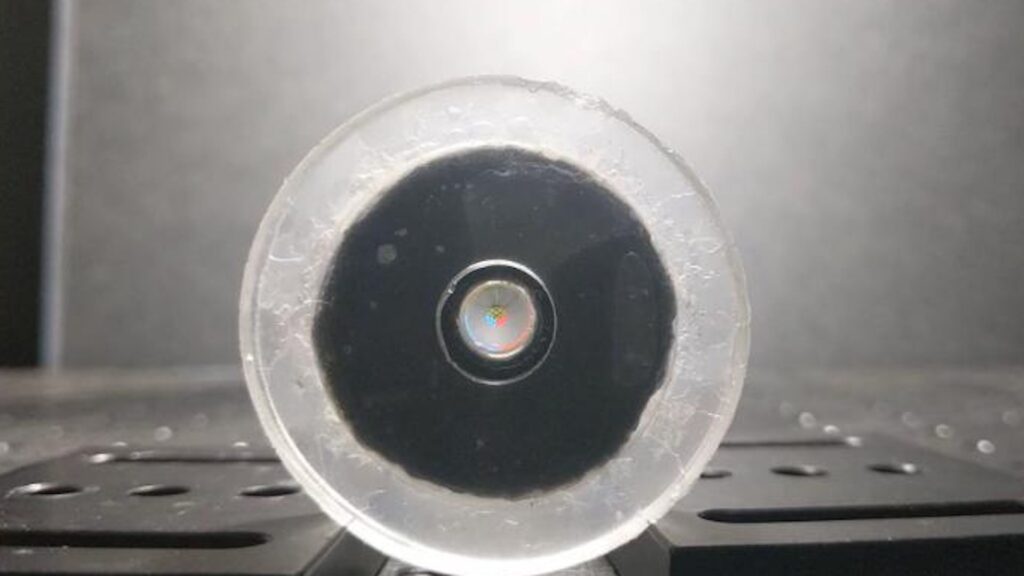The squishy robot’s eyes can automatically focus in response to light without any external power supply. The ultra-powerful robotic lens is sensitive enough to distinguish between the hairs on an ant’s legs and a leaf from a pollen grain.
The lens could lead to “soft” robots with powerful vision that don’t require electronics or batteries to operate. Soft robotics can be used in a wide variety of applications, from wearable technology that can integrate with the human body to autonomous devices that can operate on rough terrain or in dangerous spaces, said study lead author Corey Jenn, a doctoral student in biomedical engineering at Georgia Tech. Traditional electric robots use rigid sensors and electronics to perceive the world.
you may like
The lens is made of hydrogel and contains a polymer backbone that can trap and release water, allowing the hydrogel to move between near-liquid and near-solid states. In this case, the hydrogel responds to heat, releasing water and contracting when it warms up, and absorbing water and expanding when it cools down.
The researchers created a ring of hydrogel around a silicone polymer lens and placed the eye-like design into a larger frame. The mechanical structure is similar to that of the human eye, Zheng said.
The hydrogel is embedded with small particles of graphene oxide, which is dark and absorbs light. When light with an intensity comparable to sunlight hits the graphene oxide, the particles heat up and warm the hydrogel, causing it to contract and stretch, pulling the lens into focus. When the light source is removed, the hydrogel expands and releases tension on the lens. Hydrogels are sensitive to light across the visible spectrum.
In a new paper published today (October 22) in the journal Science Robotics, Zheng and his doctoral advisor Xu Jia, a biomedical engineer at the Georgia Institute of Technology, found that the lens can be used in place of the glass lens in traditional light microscopes to discern fine details. For example, the lens can image a 4-micrometer gap between a tick’s claws, see a 5-micrometer fungal filament, and detect a 9-micrometer stump on an ant’s foot.
What’s even more exciting is that the researchers are now integrating the lens into a valve microfluidic system made from the same responsive hydrogel, Zheng said. In other words, the light used to create the image can also serve to power an intelligent autonomous camera system, Zheng said.
And because hydrogels are adaptable, the lenses could potentially be able to “see” far beyond what the human eye can detect. For example, we might be able to mimic a cat’s vertical eye’s ability to detect camouflaged objects, or copy the squid’s bizarre W-shaped retina to see colors invisible to humans.
“You can actually control the lens in a very unique way,” Zheng said.
Source link

